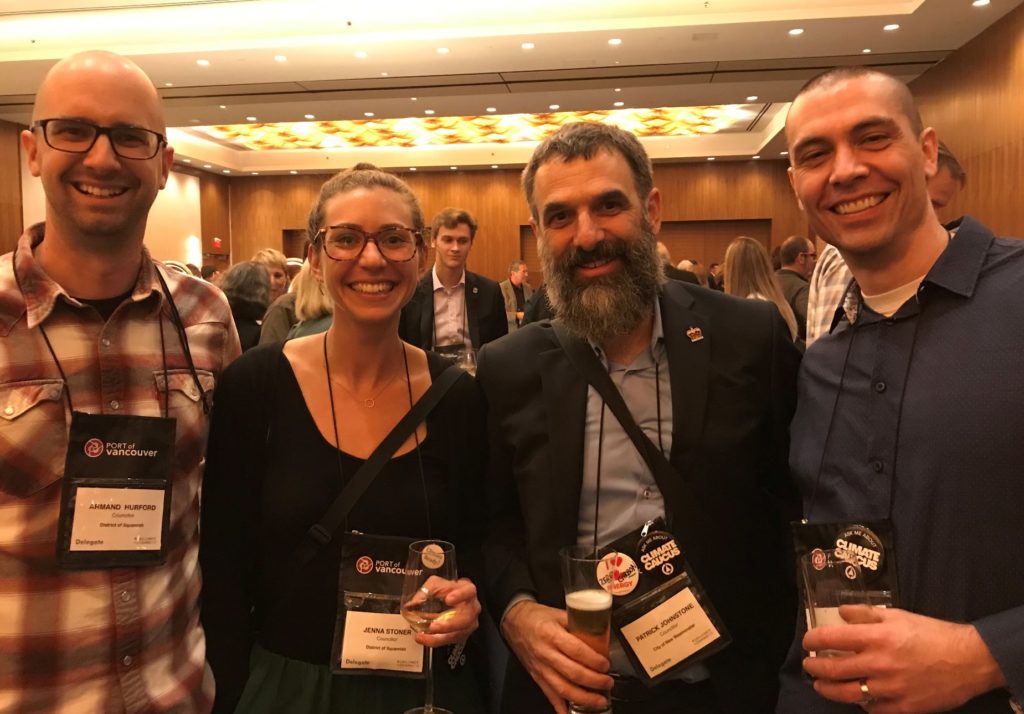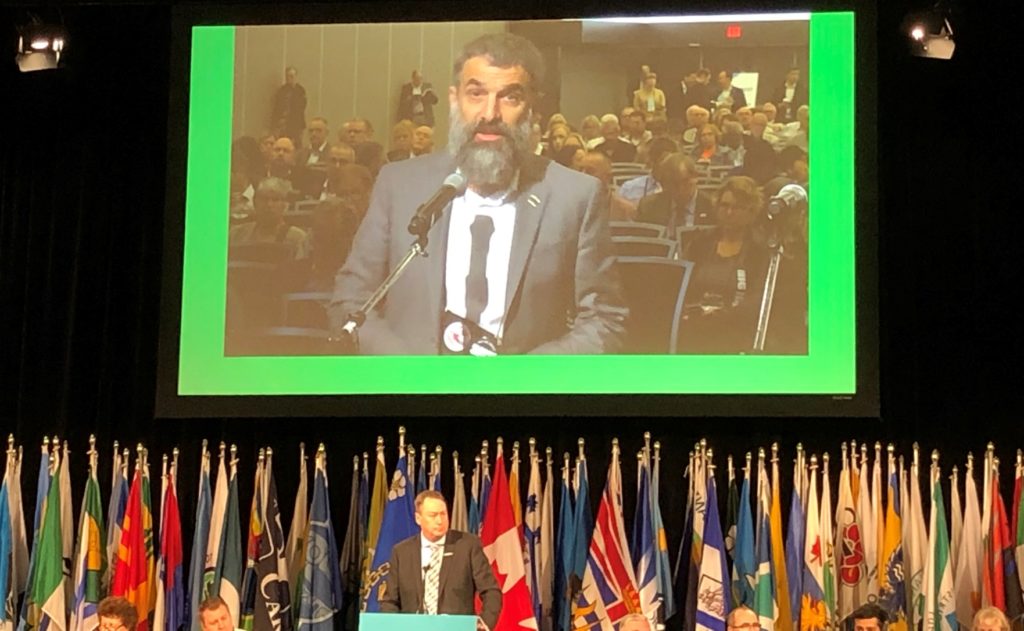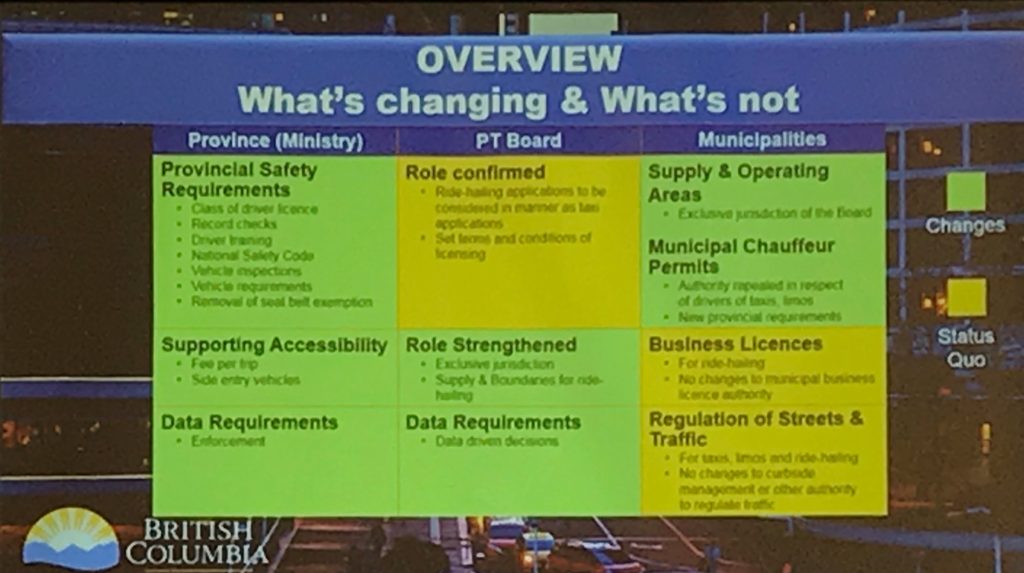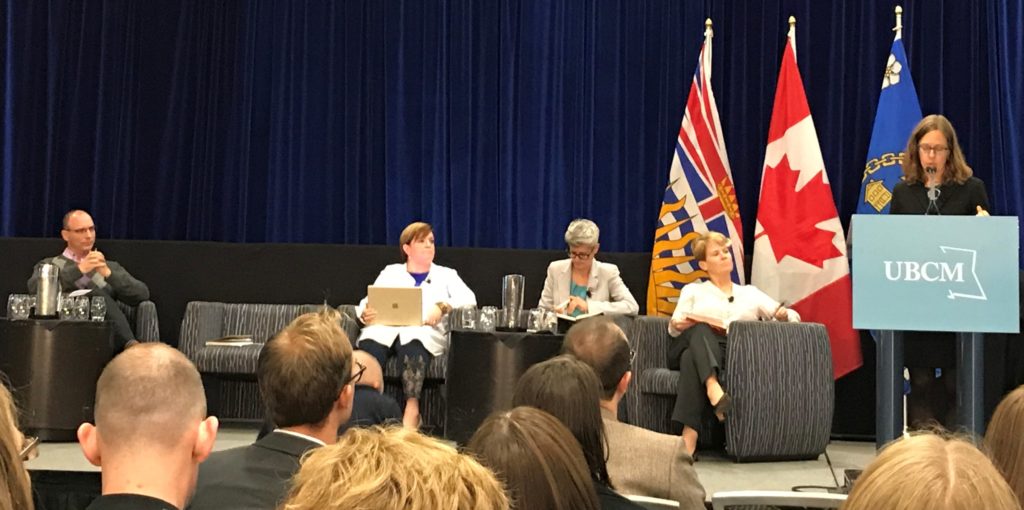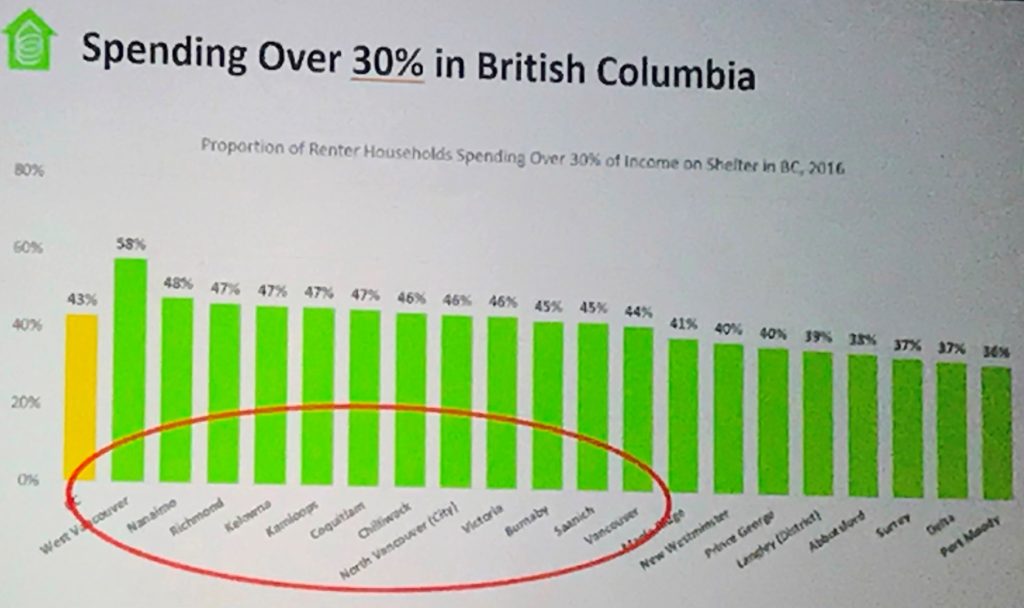The last council meeting of the month usually includes a Public Hearing meeting, and November 25th was no exception. What was different was we changed the timing so we had a full hour of meeting before the public hearing, which made it much easier for us to get some of the non-public-hearing work done and let some of our staff go home a little earlier. So my order of things may be a little off here, but the Agenda was something like this:
Proposed 2020-2024 Capital Program
We started off with a presentation on the (still very draft) Capital Plan to fit into the 2020-2024 financial plan. The biggest part of this work right now is not deciding what things we could do in the next 5 years, but what we are NOT going to do, because the Capital plan as presented in preceding months is simply too big. The NWAAC is blowing a $100 Million hole through the plan, and other things are going to need to be scaled back or deferred.
I will talk more about this in the months ahead, but more importantly, Council endorsed a public engagement plan to have the public help us set capital priorities, and hopefully get some feed back on where we see the budget going. How do we prioritize? This is a conversation Council has to have, and a conversation we need to have with the residents of New West.
The following items were Moved on Consent:
263 Jardine Street: Temporary Protection Order
The owner of a 1922 house in Queensborough wants to demolish it, and presumably replace it with a new house. The City has a policy that 60+ year old houses up for demolition pass through the Community Heritage Commission prior to demo approval, and the community has raised some concerns about the heritage value of this house. The CHC recommend we put a 60-day stay on the demolition order to try to convince the owner to not knock it down, or find alternatives.
Heritage Register Update
4 houses in the City that have received some sort of zoning entitlement through Heritage Restoration Agreements are being added to the Heritage Register.
Amendment to Water Shortage Response Bylaw
This is a housekeeping amendment to bring the water shortage fees and fines into the regular engineering rates bylaw so they can have synchronized annual review. This changes literally nothing except how we operationally account for the fees and the process required to change them in the future.
660 Quayside Drive (Pier West BOSA Development) – Status of Construction
This is an update on construction activities at the Pier West site on the waterfront. After some difficult issues arose last summer, Bosa has spent more time communicating with stakeholders in the neighbourhood and has worked out some of those issues. The overpass at Sixth Street is delayed by railway approvals (but coming along). There are still some “in river works” that need to happen this winter during the “fisheries window” when they will have the least impact on fish in the river due to seasonal migration. The eventual closure of Quayside Drive at Begbie is delayed until 2023, and will be limited to 6-8 weeks; the earlier scenario of a year or longer closure has been avoided though creative project management and some shifting of how the underground parking will be structured.
There have been some challenges maintaining accessibility through the site, as Bosa have committed to do until the Sixth Street overpass is completed. City Staff and Bosa are continuing to work through some of these issues, and Bosa has been fast to make necessary improvements when identified.
User Fees and Rates Review for 2020, Amendment Bylaws for Three Readings
After a review in principle last meeting, Staff have now sketched up the necessary Bylaws to adjust our Users Fees and Rates for 2020. The Shoe Shine Stand business license rate remains unchanged at $95.98 for up to 5 chairs, and $17.77 per chair for 6 or more.
Electrical and Engineering Utility Amendment Bylaw report
After a review in principle back in the November 4 meeting, Staff have now sketched up the necessary Bylaws to adjust our Utility fees for the next year. Water (7%) Sewer (7%) and Solid Waste (12%) increases are what was projected last year, and reflect our current 5-year financial plan so no change there. Electric utility will be going up 3.8%, which is from the already-project 2.8% increase plus a 1% increase to the Rate Rider which (along with half of the existing 5% Rate Rider) be directed to a Climate Action reserve fund to pay for some of the Climate Action initiatives in the community.
Justice Committee Terms of Reference – Unit Coordinator of the New Westminster Victim Assistance Association
We are adjusting the terms for this committee to assure a member of the New Westminster Victim Assistance Association is included.
The following items were Removed from Consent for discussion:
Tourism New Westminster request for financial support for Municipal Regional District Tax application
Our local Destination Marketing Organization has an opportunity to implement a local 2% – 3% tax on local hotel rooms, as is common throughout BC. This fund would go directly to fund the Tourism New West operations, and would finally establish consistent funding for their operations. They are requesting some seed money to set up the most robust application. This one-time request will come from existing budget in the CAO’s office.
Council Procedure Bylaw Amendment Bylaw No. 8162, 2019 – Second and Third Readings
We are making a subtle change in how our Public Delegations work, mostly to assure time-sensitive business can get done on Council nights and to help assure delegation space at council remains accessible to as many people as possible. Hopefully, things will run a little more efficiently in the New Year.
230 Keary Street, 268 Nelson’s Court and 228 Nelson’s Crescent (Brewery District): Zoning Amendment Bylaw (Text Amendment) for First and Second Readings and Housing Agreement Amendment Bylaw for Three Readings
Wesgroup is hoping to shift some land use in the next phases of the Brewery District development. They are not increasing density, but want to shift one building (Building 5) from a mix of market rental and strata condo to all market rental, and shift the next building (Building 7) to mostly Market Rental with a smaller commercial/office component, then switch the final all-commercial/office building (Building 8) to be switched to up to 2/3 residential, with the remaining commercial/office. This would also include a significant change in the shape of Building 8 (taller and narrower) but no net increase in density.
I expressed some concerns about how this change will impact some of the other goals we have for Building 8 (i.e. the building of accessible and seamless access between the SkyTrain Station and RCH) and how these changes would impacts the assumptions for traffic impacts and parking needs built into earlier approvals on the site. I was mostly interested in better understanding how our processes to secure commitments around these items fit in this slightly unusual process.
This Bylaw amendment will go to Public Hearing, so I will hold off on further comment until then.
Ride-Hailing: Guiding Principles for Responding to Ride-Hailing
The ride-hailing legislation by the province both gives to and takes away from some powers local governments have in how we regulate businesses and road use in our City. For example, we cannot (sorry Mayor McCallum and Councillor Jackson) stop ride-hailing companies from operating in our City, or even regulate the number of vehicles operating. We can, however, require business licenses for anyone operating on our community, and regulate things like pick-up and drop off rules.
As we are now required to adjust our regulatory environment, staff sought Council support for a set of guiding principles to outline how they should go about putting that regulator environment together.
Not speaking on behalf of Council now, but I believe the rules for ride hailing services should be similar to taxis: they need a business license to operate (and we should take part in any initiative to develop inter-municipal business license agreements with the rest of Greater Vancouver), and that we should regulate pick-up and drop off to assure that public safety, especially that of vulnerable road users, is paramount. I also believe that usage data would be a vital tool to allow municipalities to manage the negative road and traffic system impacts of ride hailing seen in other cities, and it is important that Cities that want it have access to this data.
As far as I can tell, we do not have the regularly authority as a local government to require accessibility standards for the fleet, but this is something we should advocate towards, and I agree with the Provincially proposed approach that a tax be placed on non-accessible rides to fund accessibility upgrades, but I have no idea if this is even functionally possible. We are also unclear if there is even a legislative ability to do per-trip fees, like the City of Vancouver is proposing.
In the end, Council agreed to the guiding principles staff put together to provide a framework for legislation. Staff will continue to work with our neighboring communities to try as best we can to assure that there is some sort of coordinated approach here, as we all agree a patchwork of local regulations will be both hard to enforce, and confusing for the public.
Period Promise Campaign
The City of New Westminster is following the lead of our own School District and a few other communities like the City of Victoria in assuring that Civic Facilities that have washrooms and distribute free toilet paper and paper towels, also provide fee menstrual products. The cost of this program is low in the scale of our public facilities operation budget, but reflects the need to for equity in our public service offerings. In hindsight, it is remarkable it took us this long to think this is right.
We had a single piece of Correspondence with a follow-up action:
Metro Vancouver letter dated November 4, 2019 regarding consent to Metro Vancouver Regional Parks Service Amendment Bylaw No. 1290
We are a member of Metro Vancouver, and therefore part owner of the Regional Parks. There is a park on the edge of Metro Vancouver in Langley that overlaps into adjacent Abbotsford (“Aldergrove Regional Park”), and we need to agree to allow Metro Vancouver to maintain a park that is not, strictly, within Metro Vancouver. 2/3 of Metro Vancouver communities have to consent to this idea, and New Westminster formally consented to it.
We also had to Late Additions to the Agenda:
318 Columbia Street life safety
Bylaws brought to our attention a commercial property that had some unapproved residential units in it that presented some life safety issues. They updated us on some proposed enforcement actions, and will work with the building owner to bring things into compliance.
Closed motion letter to Port Moody
This is a weird one. New West Council was communicating with another municipality over some board appointment issues, and someone in that municipality provided to the media information about closed correspondence, which is clearly a violation of Section 90 of the Community Charter. This put members of our Council in a difficult situation where we were asked to comment about closed deliberations, which would have put us in violation of the Charter. So our Clerk decided it was best to release the correspondence from closed so that we were free to discuss it. I will write more about this in a future post. It’s gross, but here we are.
We then held our Public Hearing and addressed the Bylaws being considered:
Official Community Plan Amendment (Removal of Queen’s Park Heritage Conservation Area Related Protection from Seven Properties) Bylaw No. 8156, 2019
This Bylaw would wrap up the largest part of work related to the Heritage Conservation Area in Queens Park. When the HCA Bylaw was adopted, there was a division between protected heritage houses and unprotected non-heritage houses. There were 86 properties (out of ~700) that were old enough to qualify for heritage protection, but had other confounding factors that made it difficult to determine at first pass if they qualified to be protected. We have since been going through a systematic process to move all of these to Protected or Not Protected, based on their heritage merit, potential to achieve zoning entitlements, and building condition.
At a second more detailed screening back in 2018, 33 were removed from protection based on heritage merit, and 6 more are recommended for such removal now after a third level of screening. Of the 47 remaining, one more is recommended for removal due to zoning entitlement issues, which would move the remaining 46 into fully protected status.
We received several pieces of correspondence, some opposing any removals, one opposing a specific removal, a few agreeing with removals, and a few asking to have their property added to the removed list. The public delegations were mostly representing that last group, with a few showing support for the HCA process that got us this far.
Council Gave the Bylaw Third Reading and Adoption after the Public Hearing.
Official Community Plan Amendment Bylaw (1111 Sixth Avenue) No. 8145, 2019 and
Heritage Revitalization Agreement Bylaw (1111 Sixth Avenue) No. 8146, 2019
This project would remove the small office-type building that is adjacent to the historic Shiloh Sixth Avenue United Church and replace it (and the empty parking lot next door) with a larger 4-story building with underground parking. There would be a sizeable (114 spaces!) childcare facility in that new building. In the meantime, a conservation plan would further protect the adjacent Shiloh Church building according to a conservation plan.
We had a few people come to speak to Council, mostly concerned about the impact on the alleyway and the ability for it to handle the inferred traffic increases related to the Daycare. None was strongly opposed, just worried that the City address these impacts.
Council moved to support Third reading for both of these bylaws.
We then had Opportunities to be Heard on some variance permits:
Development Variance Permit DVP00670 for 221 St Patrick Street
The applicant wants to raise their house to make the basement space 8’, which means lifting the house by 1.2 feet. The house is already 0.7 feet above allowable height limit, this will put it 1.9 feet above, which is not out of scale with adjacent properties. No-one came to speak to Council on the matter, and Council moved to approve the variance.
Development Variance Permit DVP00671 for 330 E. Columbia Street (Royal Columbian Hospital)
The Hospital needs wayfinding signage, and it doesn’t meet the strict guidelines of our sign bylaw, so they need a variance. No-one came to speak to Council on the matter, and Council moved to approve the variance.
Development Variance Permit DVP00669 for 550 Sixth Street
The CIBC at Sixth and Sixth wants to update their signage, and though it is very similar to the exiting signage, it doesn’t meet the strict guidelines of our sign bylaw, so they need a variance. No-one came to speak to Council on the matter, and Council moved to approve the variance.
Finally, we adopted the following Bylaw:
Development Cost Charge Reserve Funds Expenditure Bylaw No. 8159, 2019
This Bylaw releases money from our DCCs (the money developers pay us to pay for utility and other upgrades related to development-related growth) to pay for several of the infrastructure upgrades they paid for.
One more Council Meeting until Christmas!
